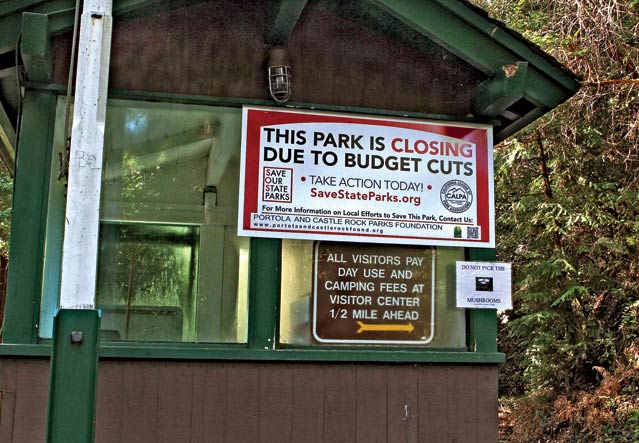It’s about to get ugly out there. In May, California that it would close 70 of its 279 state parks this month—including the popular Monterey surf break at and the 370 bolted climbing routes at , in the Santa Cruz Mountains—to accommodate $22 million in budget cuts. Which raises an obvious question: What happens to those beaches, forests, and lakes?
By the Numbers
1.5 million: acres in California’s state parks6.3 million: acres in California’s national parks
65.5 million: visitors to California’s state parks in 2010
35.4 million: visitors to California’s national parks in 2010
million: California state park budget shortfall
So far, heroic local efforts have staved off many closures. The , a non-profit conservation group based in Los Altos, committed $250,000 to keep Castle Rock open for the year. For at least the next five years, the non-profit will operate in Sonoma County. Meanwhile, the has taken over operations at the popular and parks in Marin County. At press time, the number of parks on the chopping block had fallen to 54.
But here’s the thing: those efforts amount to thumbs in a levee with a hurricane approaching. With $1.3 billion in deferred maintenance projects statewide and no indication that public funding will return anytime soon, the way California’s government manages public land may have to be completely transformed.
“The whole structure was built up at a time and around a model that no longer exists,” says Eric Mart, founder and president of , a private Palo Alto–based company that operates park concessions throughout the West. The old model requires a steady stream of money from the state’s general fund, which originally was dispensed to the parks to provide a public good. But starting in the early '90s, the state began to chip away at the general-fund money designated to cover park operating costs. The cuts intensified during the recent recession, and today California’s parks rely on general-fund money for just 30 percent of their total operating costs—down from 90 percent three decades ago. Other states face similar challenges: Utah, Georgia, Arizona, and New Jersey are scrapping to find the cash to keep their parks open. These states may also initiate closures or, more likely, turn over more park operations to private, for-profit companies.
It’s a controversial strategy, despite the fact that private businesses are already major revenue generators in many parks. Anytime a rafting or climbing outfitter leads trips in a state park, it pays the government a fee to do business. But as pay-to-play operations expand, the very definition of a state park—land given to the public for free recreation—could change. “The concern we have is that as the governor privatizes parks, is this just a giveaway to corporations or campaign contributors?” wonders Jeff Tittel, director of the of the Sierra Club. Tittel worries that the public could find recreation access limited by exorbitant fees or partial closures for the sake of cash-generating deals. (Think weddings or corporate retreats.)
spokesman Roy Stearns insists that the concerns are unwarranted. “We’re not going to be renaming any state parks after corporations,” he says. And according to Warren Meyer, president of Phoenix-based , which operates park concessions, outsourcing could help state parks avoid unnecessarily high overhead, such as paying law-enforcement-trained employees to maintain facilities. “It’s not privatization so much as it’s a division of labor,” Meyer says. After all, who cares whether the toilets are cleaned by a rent-a-ranger or a state park employee?
Still, to keep the gates open, California is considering a heftier privatization option, one that includes leasing management of operations—everything from lodging to fee collection—for at least 21 of its parks. This could clear the way for more for-profits to control the parks’ day-to-day business. And while a private company may be good at managing a piece of land, its priority will always be the bottom line.
“State parks are an important public good,” says Dan Jacobson, legislative director of the advocacy group . “Although people who are buying the parks may have every intention of maintaining that, we’re going down a path that could be trouble later on.”
Unless public funding magically returns or the state parks find non-profit partners that don’t care about turning a buck, some form of privatization seems inevitable. As Meyer puts it, “The alternative is a closed park. It’s really hard to imagine an outcome being much worse than that.”


